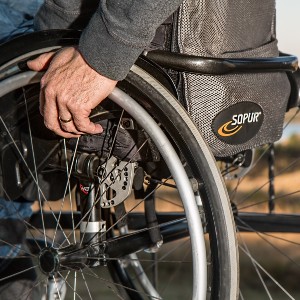Does satisfaction with the manual wheelchair have an impact on the quality of life in spinal cord injury?

Accepted: 29 September 2023
HTML: 5
All claims expressed in this article are solely those of the authors and do not necessarily represent those of their affiliated organizations, or those of the publisher, the editors and the reviewers. Any product that may be evaluated in this article or claim that may be made by its manufacturer is not guaranteed or endorsed by the publisher.
Authors
Background: Customised wheelchairs are integral component for comprehensive rehabilitation and community integration for spinal cord injury (SCI) survivors, while inappropriate wheelchairs negatively impact their functional independence, mobility and quality of life (QOL). Keeping this in mind, this study aimed to determine the effects of manual wheelchair users' satisfaction on QOL in SCI.
Methods: This cross-sectional study, which included 112 SCI, was conducted at the Paraplegic Centre, Hayatabad, Peshawar, over a period of 6 months using "Quebec User Evaluation of Satisfaction with Assistive Technology (QUEST)" and “World Health Organisation Quality of Life (WHOQOL-BREF)” as study tools.
Results: QUEST showed a significant positive correlation with physical health (rs = 0.375; p< 0.001), social relationships (rs=0.234; p = 0.013), and environmental health (rs = 0.462; p<0.001) of QOL except psychological health, and similarly, overall health and overall QOL was positively impacted. Furthermore, overall health and environmental, social relationships, and physical domains of QOL were statistically significantly impacted by the QUEST device and service aspects.
Conclusion: A moderate level of satisfaction among participants for both devices and services was observed, which also impacts their physical, environmental, and social domains of QOL. Therefore, steps from the key stakeholders are required to provide satisfactory appropriate wheelchairs to patients so their QOL can be improved.
How to Cite

This work is licensed under a Creative Commons Attribution-NonCommercial 4.0 International License.

 https://doi.org/10.4081/hls.2023.11526
https://doi.org/10.4081/hls.2023.11526



